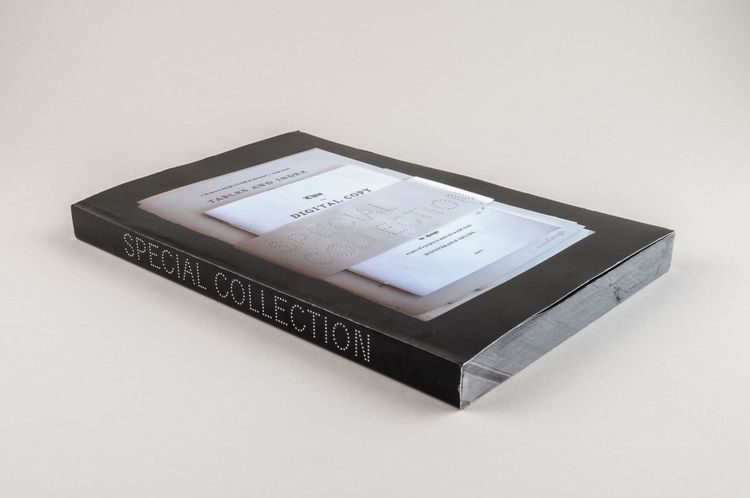This print-on-demand edition goes back to the author’s MFA Thesis at Rhode Island School of Design, for which he made twelve hand-sewn books under the title Special Collection, all of which this volume reproduces together.
The twelve chapbooks are “partial recreations of books found on Google Books,” among them such apt titles as Dewey’s Decimal Classification, Catalogue of Choice, Useful, and Curious Books, and A Handy-Book About Books. In addition, there is a compilation of loan period slips (Date Due) and a chapbook titled Ex Libris Being a Collection of Artifacts & Digits Digitized by Google. This is complemented by a presentation of the Google Books project by Google itself, which has inscribed itself with watermarks in all the scans made—just as libraries used to mark their possessions with ink, embossed, or punched stamps, in the style of which the title of Shaykin’s volume is designed.
“Each [chapbook] is reproduced at its original size, revealing multiple disruptions and errors, introduced during Google’s own scanning process: the scanner’s hand, holding down and obliterating the page; type and illustrations which have degraded and blurred to the point of illegibility; pages scanned while in the process of being turned; fold-out maps and charts that were scanned while closed. Some of these artifacts are beautiful and evocative. They are the found poetry of this new machine” (artist website).
Some finds are indeed ingenious, such as when a book page titled “PART.IX.-INDEX” is appropriately “illustrated” by the index finger of the person scanning the book. But at the same time, Special Collection is much more than just entertaining found objects or beautiful artifacts: “By reinvesting these digital books with physical form, Special Collection asks us to consider the contradictions and unintended consequences of technological advance. Approaching Google Books through its fissures offers a chance to peek behind the curtain of a mysterious, complicated endeavor, which is little understood and generally taken for granted as progress. By using Google’s scans and resources to create this work, I am both highlighting the potential of this new era of distribution and access, and questioning Google’s claims of ownership of all the world’s information” (artist website).
